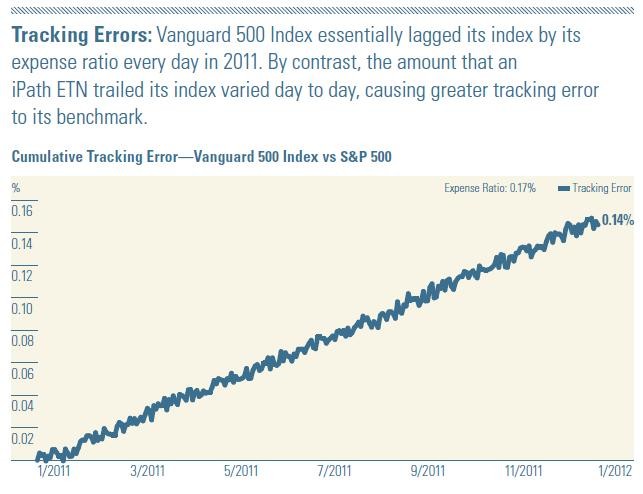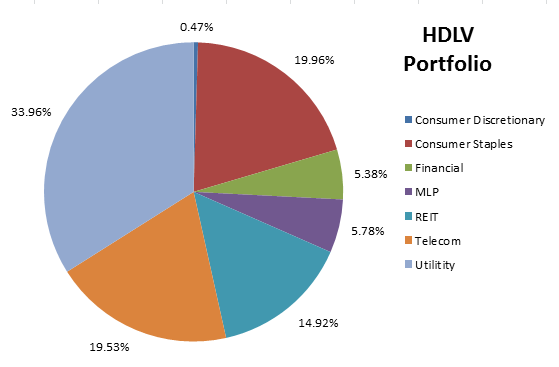Tax Advantages Of ETNs
Post on: 2 Май, 2015 No Comment

by Michael Johnston on March 16, 2011 | Updated December 8, 2014
As the universe of exchange-traded products has expanded considerably in recent years, investors have become more aware of the nuances between the various types of investment vehicles. Under the ETF umbrella are a number of product structures that arent true 1940 Act exchange-traded funds, including unit investment trusts (UITs) and grantor trusts. Also included are exchange-traded notes (ETNs), debt securities that are similar in many ways to their ETF cousins but very different in others.
ETNs are debt securities issued by financial institutions such as Barclays, Credit Suisse. and UBS. But unlike most debt instruments, the value of these securities is linked to the value of an underlying index; as the benchmark increases, so too does the value of the exchange-traded note. As such, the exposure offered ETNs is similar to the exposure of passive ETFsboth deliver returns that reflect the performance of an index [also see The Basics Of ETN Investing ].
There are, of course, some differences between ETFs and ETNs as well. Most comparisons of these two structures focus on the trade-off between credit risk and tracking error. Because ETNs are debt instruments, investors are exposed to the credit risk of the issuing institution. If the bank behind the notes goes under, investors run the risk of being unable to recover their capitala risk not faced by ETF investors. The exposure to credit risk that ETNs entail has taken on greater significance in recent years due to the financial crisisand the unimaginable collapse of one-time ETN issuer Lehman Brothers. Though the worlds largest banks find themselves now on relatively stable financial footing, some investors remain hesitant to utilize ETNs and many maintain a bias towards ETFs when presented with a choice between two otherwise similar products [When Is An ETF Not An ETF? ].
There are, of course, some advantages to ETNs as well. The most frequently-mentioned is perhaps the avoidance of tracking error; ETNs dont maintain an underlying portfolio of securities that must be bought, sold, and rebalanced as ETFs do. Rather, the change in the indicative value of an ETN is calculated based on the movement of the related indexmeaning there is no room for manager inefficiencies or the structural nuances of ETFs and rebalancing requirements to create a gap between product return and index return.
Avoiding tracking error is a nice feature to some investors, but restricting a discussion of the potential advantages of ETNs to this aspect skips some benefits of this product structure that can potentially have a significant impact on bottom line returns. One of the most widely-cited advantages of ETFs over mutual funds is the potential for enhanced tax efficiencies. And this is a very real advantage for investors [see Tax Efficiency Scorecard ]. But when it comes to certain asset classes, ETNs may offer significant tax advantages relative to their ETF cousins as well.
Commodity ETNs
Commodity ETPs have grown in both AUM and number of products in recent years, with many investors embracing the exchange-traded structure as the most efficient way to access this asset class. But as many investors have learned, not all commodity ETPs are created equal. While this can refer to the nuances of a futures-based strategy, it is also true of the tax consequences associated with various structures.
Commodity ETFs that are structured as limited partnerships and hold futures contracts are taxed annually regardless of whether the position was bought, liquidated, or simply held. Capital gains are taxed at a blended rate equal to long term rates weighted 60% and short term rates weighted 40%. When held in an IRA, there may be ways to avoid incurring these taxesspecifically since an IRA is not subject to taxation until withdrawal. But if held in a taxable account, it can be frustrating to incur taxes simply for holding a fund throughout the year. Its hard to imagine that many investors could be frustrated with products such as DBC after a blistering 2010 performance, but getting an unexpected tax bill can certainly take some of the luster off these products [see ETFs For Contango Free Commodity Exposure ].
ETNs, on the other hand, are debt instruments that dont actually hold any assets. And as such, investors are taxed only upon the sale of the note. Moreover, taxes are incurred at short term capital gains rates for investments held less than one year and at long term rates for those held longer than one year.
Individual tax circumstances will obviously vary from investor to investor, but commodity ETNs will often be the superior vehicleat least from a tax perspective [use the ETF Screener to filter commodity products by structure type].
MLP ETNs
The MLP sector has seen a surge in interest in recent years, thanks in part to depressed yields on fixed income securities. Because these entities generate fees for storing and transporting energy commodities, they generally provide stable and attractive current returns. Many investors have begun utilizing ETPs to access MLPs; the six products in the MLPs ETFdb Category have aggregate assets of more than $3.5 billion.
Similar to the commodity space, there are both ETF and ETN options for accessing MLPs, and the tax consequences of the decision between the two structures can be significant. The ETF has the edge on distributions treated as the return of capital, but will accrue a deferred tax liability as the underlying securities increase in value (and, conversely, an asset if they decline). When MLPs rally, this can lead to a significant disconnect between products that seem similar. Both the Alerian MLP ETF (AMLP ) and the UBS E-TRACS Alerian MLP Infrastructure ETN (MLPI ) are linked to the Alerian MLP Infrastructure Index. yet the returns to these products have been very different:
To be fair to AMLP, the chart above simplifies a rather complex tradeoff of risk factors and tax efficiencies. For certain investors, the ability to defer taxes may make the ETF a preferred structureespecially when MLP prices are flat or even down (last week, AMLP outperformed MLPI by about 140 basis points). But in other markets, ETNs will have a clear edge that can translate into a material difference in bottom line return [see More Thoughts On MLP ETFs/ETNs ].
Merger Arbitrage ETNs
ETFs have gradually become more advanced, a trend perhaps best evidenced by the introduction of hedge fund replication products. One specific strategy accessible through ETPs is merger arbitrage, a technique that involves buying stocks of companies that have been announced as takeover or acquisition targets. Due to uncertainty that the transaction will ultimately be completed, these securities tend to trade at a discount to the proposed transaction priceproviding an opportunity to capture that delta.

It should be noted that the arbitrage certainly isnt riskless, as deals often fall apart. That makes this strategy ideal for the ETF wrapper, as the structure allows investors to spread out risk across multiple target companies. But because this strategy requires securities to be held for only a limited period of timewhen the transaction is completed, the fund often receives cash for the acquired companyit can dull the traditional tax efficiencies associated with ETFs [see ETN Investing: Facts And Fallacies ].
The IndexIQ Merger Arbitrage ETN (MNA ) made a capital gains distribution of $0.32 at the end of 2010, equal to about 1.3% of its NAV at the time. This doesnt reflect on poor management of the fundits simply a consequence of holding stocks that are regularly acquired in cash transactions. And while it certainly isnt a crippling tax event, for some investors it might be worth avoiding if possible.
The Credit Suisse Merger Arbitrage Liquid Index ETN (CSMA ) is an ETN linked to an index that replicates a merger arbitrage strategy. Because the ETN is a debt instrument that doesnt actually hold the target stocks, it can allow investors to avoid incurring short-term capital gains. Again, tax circumstances will vary by investors, but for some looking to implement a merger arbitrage strategy, the ETN wrapper might be the preferred tool.
Trend Following ETNs
Trend following is another strategy that has been around for ages, but has just recently been packaged as a part of the ETF lineup. RBS has a suite of products that oscillate exposure between cash and an index of stocks or commodities based on momentum factors. When a specified index (e.g. the S&P 500 for TRND ) closes above its 200 day moving average for five consecutive sessions, exposure to that benchmark is established. If it closes below that threshold for five sessions, exposure moves into cash.
On the surface, TRND, TRNM, and TBAR seemingly provide access to strategies that are easy to implement on ones own. But because these products are structured as ETNs, they can potentially avoid the major drawbacks of a trend following strategyheavy commission fees and tax inefficiencies. Again (you probably know where this is going), the RBS ETNs dont hold the underlying securities, and as such wont incur capital gains liabilities whenever exposure is switched from stocks to cash. Depending on the market environment and effective tax rates, this feature can end up saving you a boatload in taxes.
ETN Use On The Rise
There is evidence to suggest that investors are becoming more comfortable with using ETNs in their portfolios. According to February data from the National Stock Exchange, ETN assets grew almost 75% over the previous year, compared to about 38% growth for the total ETP industry. There are now about 135 ETNs with aggregate assets of about $16 billion.
It is certainly possible that some of the legislation allowing for favorable tax treatment of ETNs will be changed in the future. In fact, there is a historical precedent for such an event; in 2007 the IRS revised legislation to eliminate a tax advantage of currency ETNs. For the time being, however, many of the tax efficiencies built into ETNs are there for the taking [Five Ultra Popular ETNs ].
Disclosure: No positions at time of writing.














